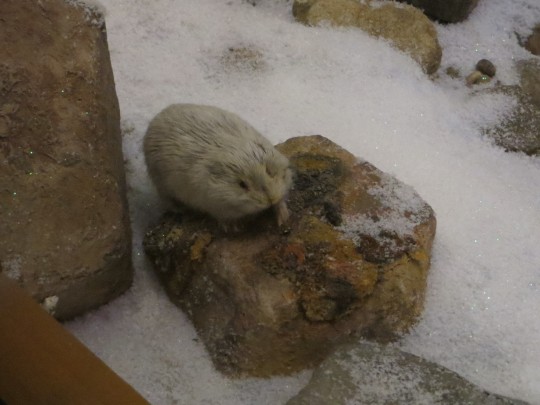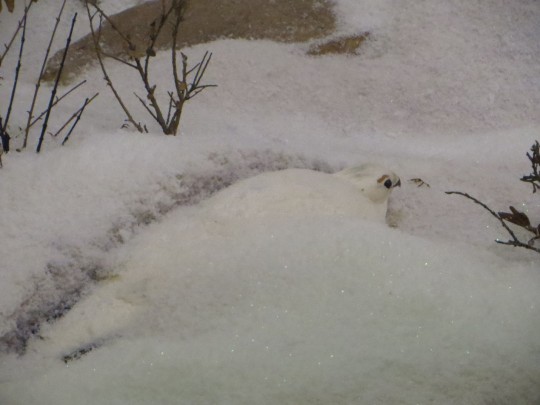
by Patrick McShea
Visitors who read the descriptive label at the snowiest diorama in the Hall of North American Wildlife are presented with a visual challenge. Under the title, Arctic animals don their winter whites, the interpretive text lists four species within the exhibit displaying protective coloration: Caribou, Arctic Fox, Collared Lemming, and Willow Ptarmigan.
The first two species are impossible to miss. If you center yourself in front of the three-dimensional scene, an Arctic fox crouches a few feet from your right knee, and a caribou pair so dominate the view that the concealment value of their pale coats is not fully apparent until you notice faint images of a larger herd painted into the backdrop horizon.

A quick search of the foreground perimeter is all that’s necessary to locate a collared lemming (above) but finding the willow ptarmigan requires determined effort. This member of the bird family that also includes pheasants, grouse and turkeys, undergoes a near complete annual color change. Willow ptarmigan trade their largely brown summer plumage for snow white winter feathers.

The birds also utilize the insulating properties of snow, sometimes roosting as much as a foot below the surface. The resting place for the willow ptarmigan in the diorama isn’t that deep, but even with the aid of the above picture it can take some searching to locate.
Patrick McShea works in the Education and Visitor Experience department of Carnegie Museum of Natural History. Museum employees are encouraged to blog about their unique experiences and knowledge gained from working at the museum.
